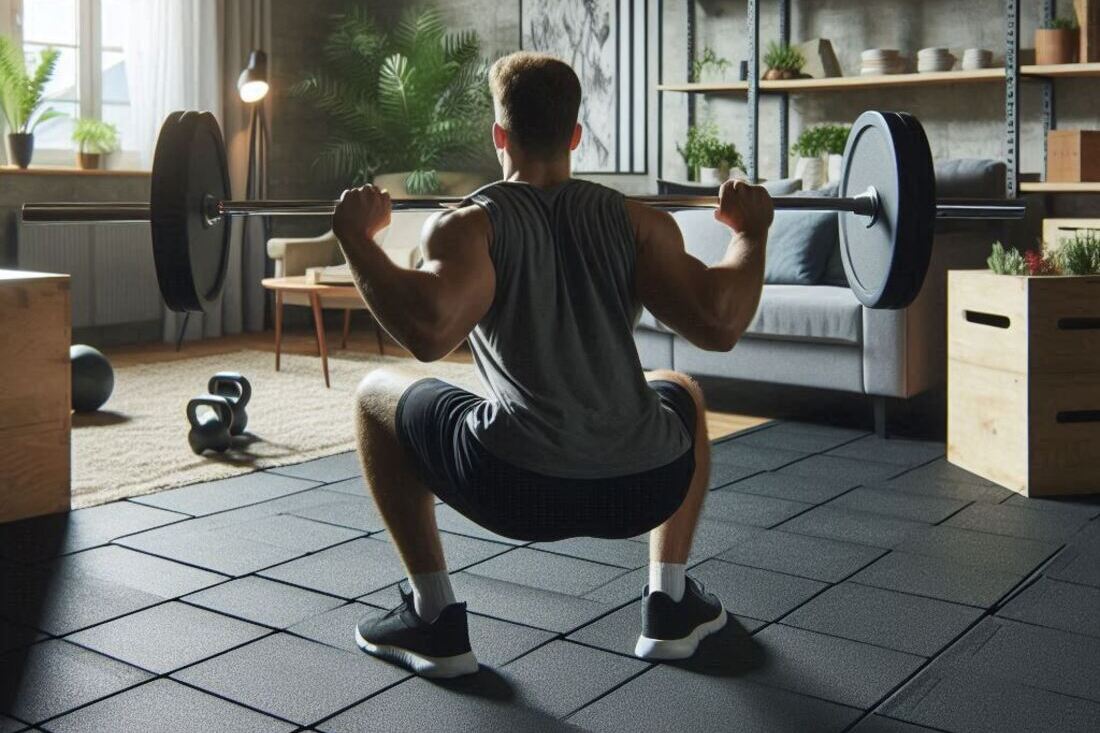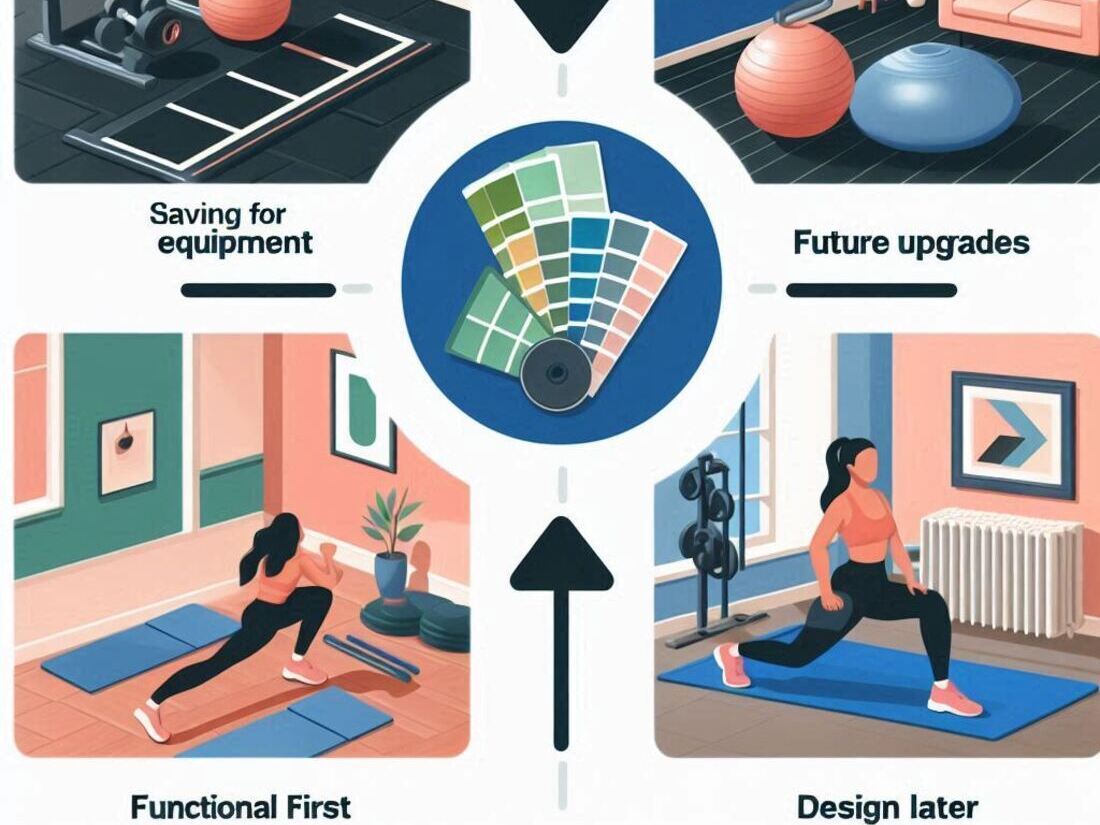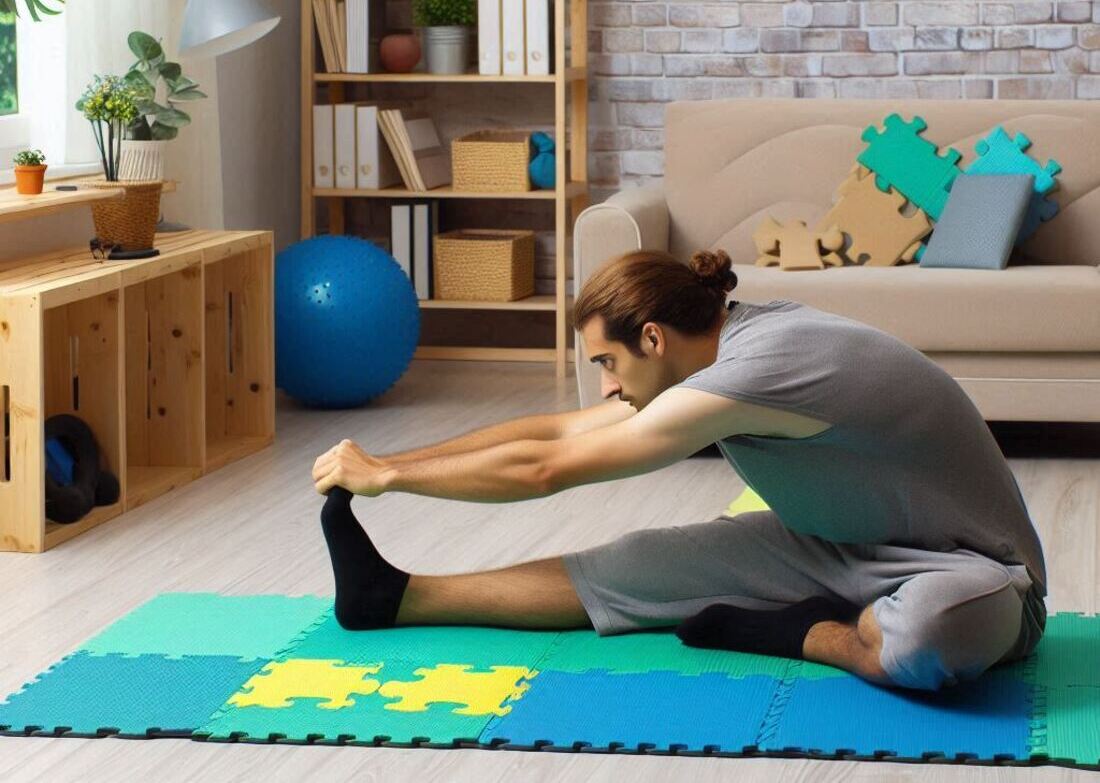Let’s face it, creating a dream home gym can quickly turn into a financial nightmare.
Expensive flooring options can leave you feeling deflated before you even start your first workout.
But there are strategic ways to equip your home gym with a functional and stylish floor without breaking the bank.

This guide equips you with top tips for buying affordable home gym flooring.
We’ll explore clever cost-saving strategies, compare popular budget-friendly options, and answer frequently asked questions to guide you towards the perfect flooring solution for your home gym – all without blowing your budget.
Why Prioritize Affordable Flooring for Your Home Gym?

Building a home gym is an investment in your health and well-being.
Here’s why prioritizing affordable flooring is a smart financial decision:
- Allocates More Budget for Equipment: By saving on flooring, you can allocate more resources towards essential equipment like weights, resistance bands, or a yoga mat, ultimately creating a more versatile workout space.
- Flexibility for Future Upgrades: Choosing a cost-effective flooring option allows you to upgrade later as your fitness needs or budget evolve. You can always invest in higher-end flooring when your gym becomes a more established part of your routine.
- Focus on Functionality Over Aesthetics: While aesthetics are important, prioritizing functionality ensures your flooring provides a safe and supportive foundation for your workouts. You can always enhance the visual appeal with other design elements later.
Key Takeaways on Prioritizing Affordable Flooring
- Saves money for essential equipment, creating a more versatile gym.
- Enables future upgrades as your fitness needs or budget change.
- Focuses on functionality first for a safe and supportive workout base.
Now that you’re ready to explore budget-friendly options, let’s delve into some popular choices for affordable home gym flooring:
Top Affordable Home Gym Flooring Options
(Note: Affiliate Links)
- Rubber Floor Mats: These interlocking mats offer a durable, slip-resistant surface at a very reasonable price. They are perfect for weightlifting, cardio, and general workouts.
- Foam Floor Tiles: Providing a comfortable and cushioned surface, foam tiles are ideal for yoga, Pilates, and bodyweight exercises. However, they might not be suitable for heavy weights.
- Horse Stall Mats: A surprisingly budget-friendly option, horse stall mats offer exceptional durability and impact absorption. While not the most aesthetically pleasing, they are perfect for heavy weightlifting and high-impact workouts.
- Puzzle Exercise Mats: Similar to foam tiles, these interlocking mats offer a comfortable and affordable option for low-impact workouts. They come in various colors and patterns, allowing for some design customization.
- DIY Painted Concrete: If you have a concrete subfloor, consider painting it with a durable, high-traction epoxy paint. This is a very cost-effective solution, especially for spacious home gyms.
Table 1: Comparison of Top Affordable Home Gym Flooring Options
| Option | Pros | Cons | Ideal Use |
|---|---|---|---|
| Rubber Floor Mats | Durable, slip-resistant, affordable | Can be heavy, limited aesthetics | Weightlifting, cardio, general workouts |
| Foam Floor Tiles | Comfortable, cushioned, affordable | Less durable, not ideal for heavy weights | Yoga, Pilates, bodyweight exercises |
| Horse Stall Mats | Very durable, excellent impact absorption, inexpensive | Bulky, not aesthetically pleasing | Heavy weightlifting, high-impact workouts |
| Puzzle Exercise Mats | Comfortable, affordable, some design options | Less durable than rubber mats | Low-impact workouts, functional training |
| DIY Painted Concrete | Very cost-effective, customizable | Requires existing concrete subfloor, can be cold | Spacious gyms, low-impact workouts |
Additional Cost-Saving Strategies for Affordable Home Gym Flooring

Beyond choosing budget-friendly flooring options, here are some clever strategies to further reduce your expenses:
- Shop Around and Compare Prices: Don’t settle for the first price you see! Research different retailers online and in your area to find the best deals on your chosen flooring material. Consider bulk discounts if your home gym is a larger space.
- Consider Used Equipment Marketplaces: Explore online marketplaces or local classifieds for gently used flooring options. You might find high-quality rubber mats or even leftover gym flooring tiles at a fraction of the retail cost.
- Get Creative with DIY Solutions: If you’re handy, consider DIY solutions like painted concrete or even repurposing durable flooring materials from renovation projects around your home (with proper safety considerations, of course).
- Prioritize Functionality Over Aesthetics: While a beautiful gym is motivating, remember that functionality is key. Don’t get swayed by premium options that offer minimal performance benefits over budget-friendly choices.
- Focus on Areas That Need the Most Protection: Strategically place your chosen flooring where it matters most. For example, use rubber mats under weightlifting areas and foam tiles in designated stretching zones. This allows you to optimize your budget without sacrificing safety or functionality.
Finding the Perfect Balance: Matching Flooring to Your Needs
The ideal home gym flooring caters to your specific workout style and budget.
Here are some additional considerations to guide your choice:
- Workout Intensity: High-impact activities like weightlifting require more durable options like rubber mats or horse stall mats. Low-impact workouts like yoga or Pilates can benefit from cushioned foam tiles or puzzle mats.
- Subfloor Material: Ensure your chosen flooring is compatible with your existing subfloor. Concrete subfloors can accommodate various options, while wooden subfloors might require additional underlayment for some materials.
- Aesthetics: While prioritizing functionality, don’t neglect aesthetics entirely. Choose a flooring option that complements your overall gym design and motivates you to workout.
- Maintenance Requirements: Consider the level of maintenance each flooring option requires. Rubber mats might need occasional cleaning, while painted concrete might be easier to maintain. Choose an option that aligns with your time commitment.
FAQs: Frequently Asked Questions About Affordable Home Gym Flooring

Can I use carpet in my home gym?
While comfortable, carpet is generally not recommended for home gyms. It can be difficult to clean, may absorb sweat and odors, and offer poor traction for some exercises.
Are there any eco-friendly affordable flooring options?
Yes! Recycled rubber floor mats are a durable and eco-friendly choice. You can also explore options like cork or bamboo flooring remnants, if available, for a more sustainable approach.
How thick should my home gym flooring be?
The ideal thickness depends on your workout style. For weightlifting, aim for at least ⅜ inch thickness for adequate impact absorption. Lower-impact activities can benefit from thinner mats (¼ inch or less).
What should I do with leftover flooring materials?
If you have leftover flooring after installation, consider using them for other workout areas like a yoga corner or even creating a designated stretching zone. You can also get creative and repurpose them for other home projects.
Conclusion: Building a Budget-Friendly Home Gym Starts with the Floor
Creating a dream home gym doesn’t require breaking the bank.
By prioritizing affordable flooring options, employing cost-saving strategies, and choosing the right fit for your needs, you can establish a functional and inspiring workout space without compromising your budget.
Remember, a well-equipped home gym is an investment in your health and well-being, and it all starts with a solid foundation – both literally and figuratively.
Bonus Tip
Invest in high-quality floor protectors for heavy equipment like weight benches or exercise bikes. This will further extend the lifespan of your affordable flooring and minimize potential damage.
Happy (and budget-conscious) training!
